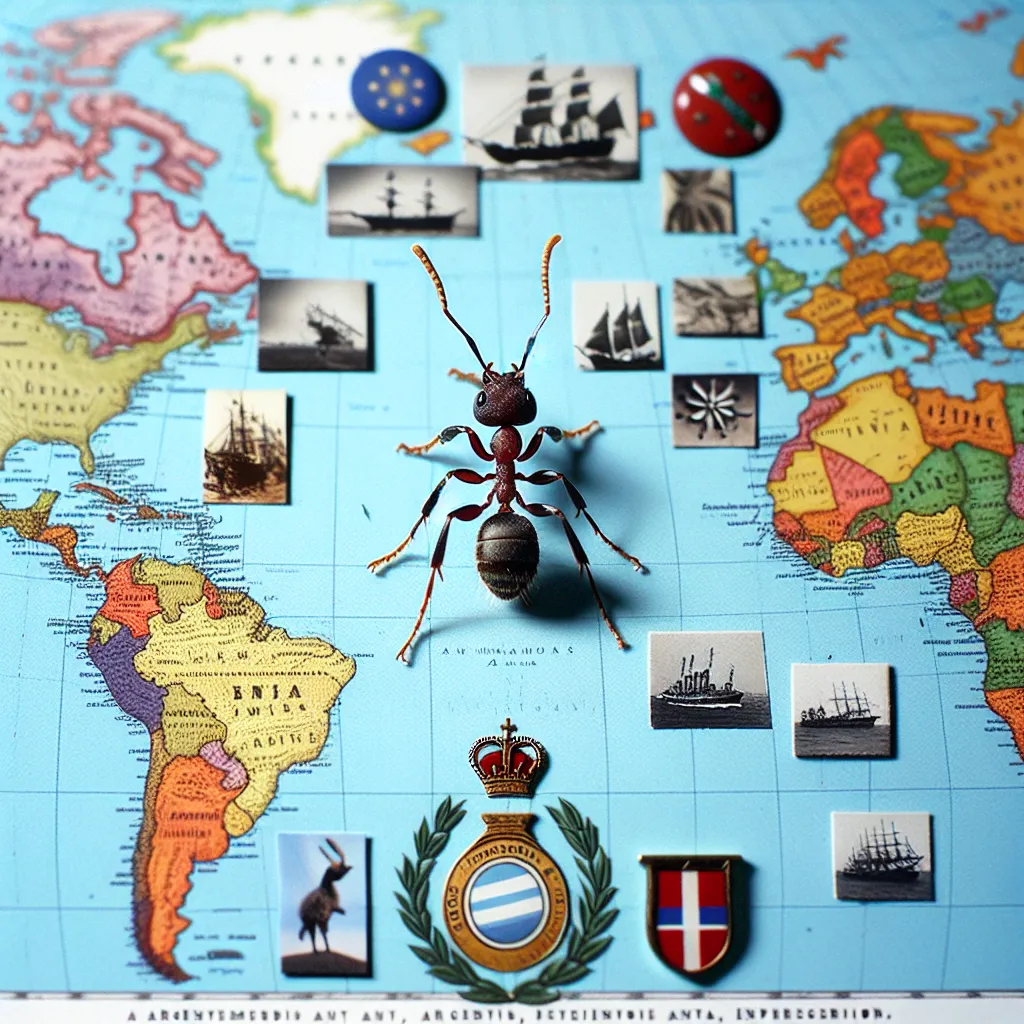In every corner of the world, ants are constantly at war. Their weapons are given by nature—armor, stingers, and sharp mandibles. Among them is a small, unassuming ant that has built the largest empire of any ant species, spanning continents and leaving millions of casualties in its wake: the Argentine ant.
This tale starts in the busy floodplains by the Paraná River in South America. Here, various ant species, like fire ants and army ants, compete for dominance. The Argentine ant, though small and seemingly unimpressive, survived among these buff competitors thanks to a unique strategy: sheer numbers.
Unlike most ant species that have only one queen, Argentine ants have multiple queens. For every 120 workers, there’s one queen laying up to 60 eggs a day. Their colonies grow quickly and can have millions or even billions of individuals. Teams of queens and workers frequently branch out to start new colonies, making them very adaptable.
However, this growth strategy has a downside. As colonies expand, DNA changes occur, and differences accumulate. These differences often lead to competition among related colonies. In their native South America, Argentine ants are cooperative within their colonies but fight fiercely against neighboring Argentine ant colonies and other species.
The game changed when humans entered the scene. Argentine ant queens hitched rides on ships and spread to places like Madeira and New Orleans. In these new lands, they faced little resistance. The transported colonies had low genetic diversity, thanks to their habit of killing up to 90% of their queens each year. This lack of diversity meant new colonies formed supercolonies that cooperated rather than competed.
A significant supercolony formed on the West Coast of the USA, becoming the base for the ants’ global conquest. Today, Argentine ants populate six continents and many islands, forming a massive intercontinental supercolony.
Their success has drastically altered the ecosystems they’ve invaded. In California, Argentine ants have overrun and replaced 90% of native ant species, including the large Californian carpenter ants. Argentine ant workers use toxic chemicals to irritate and mark their victims, swarming them in large numbers to win battles. After exterminating native colonies, they consume the brood and take over homes and territories.
This aggressive expansion has had a significant environmental impact. Argentine ants don’t cooperate with local ecosystems; they consume and move on, often posing a threat to human homes and agriculture. In gardens and fields, they tend to hordes of aphids, which harm plants by feeding on them.
Despite their domination, the Argentine ants’ rule is not unchallenged. Parts of their supercolonies have broken off, leading to civil wars, like the one in San Diego County between the Lake Hodges Supercolony and the Very Large Colony. Additionally, red imported fire ants, fierce fighters from South America, have also been introduced to new territories. These fire ants have clashed with Argentine ants in places like southeastern US, often coming out on top due to their size and venomous stingers.
Though they have faced defeats, the Argentine ants’ network of supercolonies remains a significant achievement. They are resilient and continue to stand their ground against any enemy that arises, whether in South America or on global battlefields.






